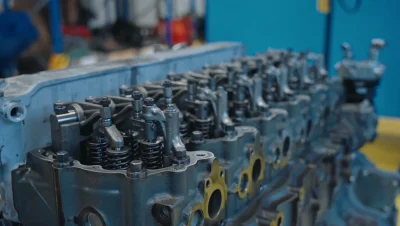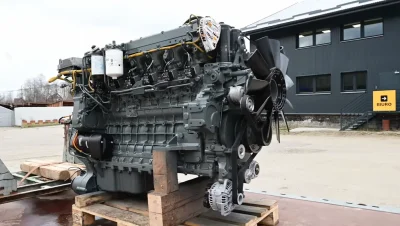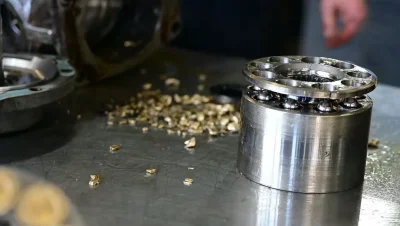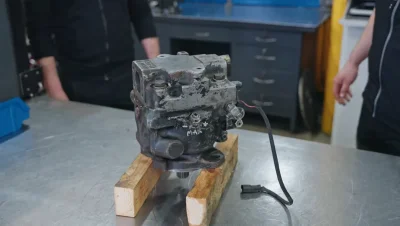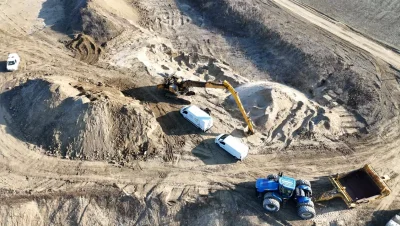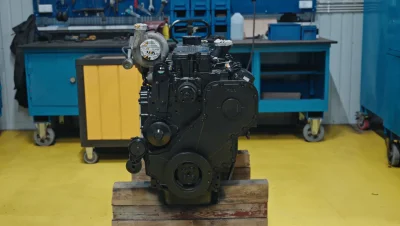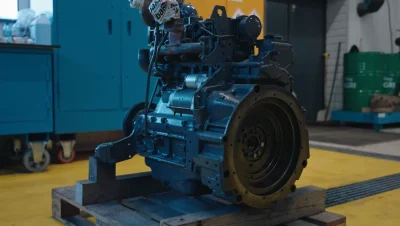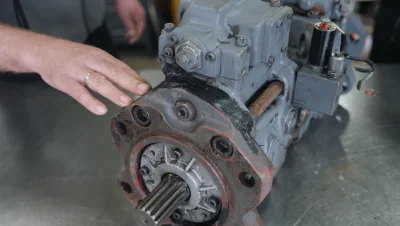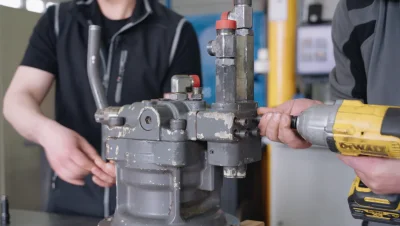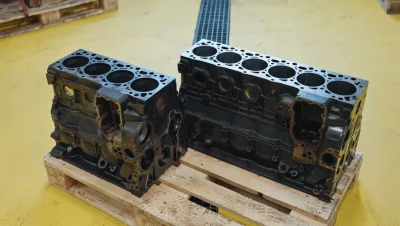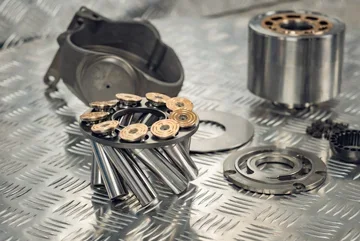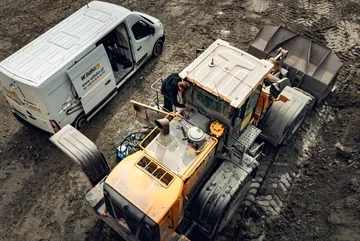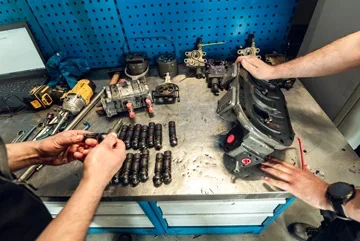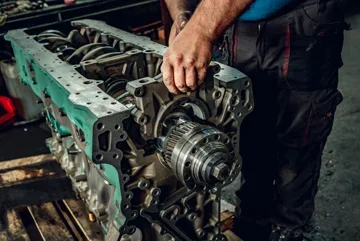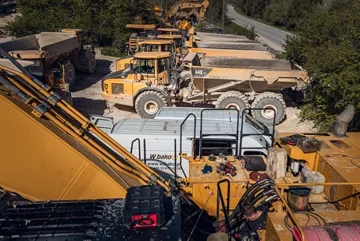Challenges and Solutions
Installing the engine in a machine that had been standing for several months and was left in a partially disassembled state by the previous company is quite a challenge. This time we moved to Slovakia, where we took on the task of restoring the functionality of the PowerScreen Warrior 1800 screener from 2009. How did the entire operation go?
Pre-assembly Diagnostics – Machine Condition Matters
Before we proceeded with the actual engine installation, it was necessary to thoroughly check the engine compartment, verify the condition of the screws, filter housing, hydraulic pump, and tank. In such a situation, there is no room for oversight – every component must be prepared with the utmost care. The machine had been without an engine for six months, which had been disassembled by the previous team. Unfortunately, the cost of repairs turned out to be higher than purchasing a new unit, so the client decided to buy a brand new engine, which we properly reconfigured.
Perkins Engine in CAT C4.4 Configuration – Reconfiguration and Installation
The new engine required reconfiguration because its flywheel housing and front with the hydraulic pump attachment differed from the version used in the machine.
We replaced the necessary components:
- flywheel,
- front housing
- and clutch
All to ensure long and trouble-free operation of the screener. For the installation of the clutch, we utilized the space in the truck – access there was much easier than in the machine compartment. The screws were secured with adhesive to prevent loosening during operation.
Tight Spaces – Access and Installation Problems
Due to the limited space under the screener's frame and the lack of appropriate equipment, the engine installation required unconventional solutions. Strapping belts and additional maneuvers were employed – all to precisely seat the engine on the mounts and fit it to the brackets.
The hydraulic pump was installed while adhering to all cleanliness principles – cutters, screw holes, seals, and sealing mass played a key role here.
In the next stage, we installed the fuel lines, electrical system, and auxiliary hydraulic pump.
Air Filtration and Final Tests
We also did not forget about the intake system – the air filter housing was thoroughly cleaned, and then a new filter was installed.
Depending on the machine's operating conditions, the filter should be cleaned or replaced even daily – its efficiency directly affects the engine's durability.
Finally, we topped up the hydraulic oil and checked the battery voltage. After cleaning the terminals and connecting all systems, the engine was started.
All screener functions – driving, belts, feed hopper – worked correctly.
Summary
At first glance, the installation of the new engine turned out to be a significant technical challenge, especially due to the lack of prior disassembly in our scope.
Despite the difficulties, the machine was started, tested, and handed over to the client fully operational – without leaks and problems.
The entire video can be seen here.



